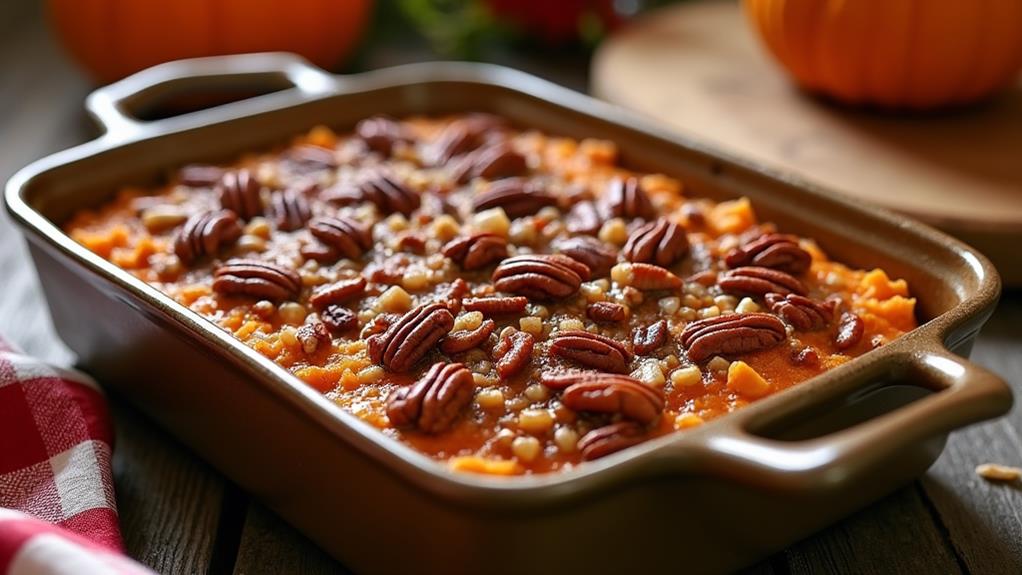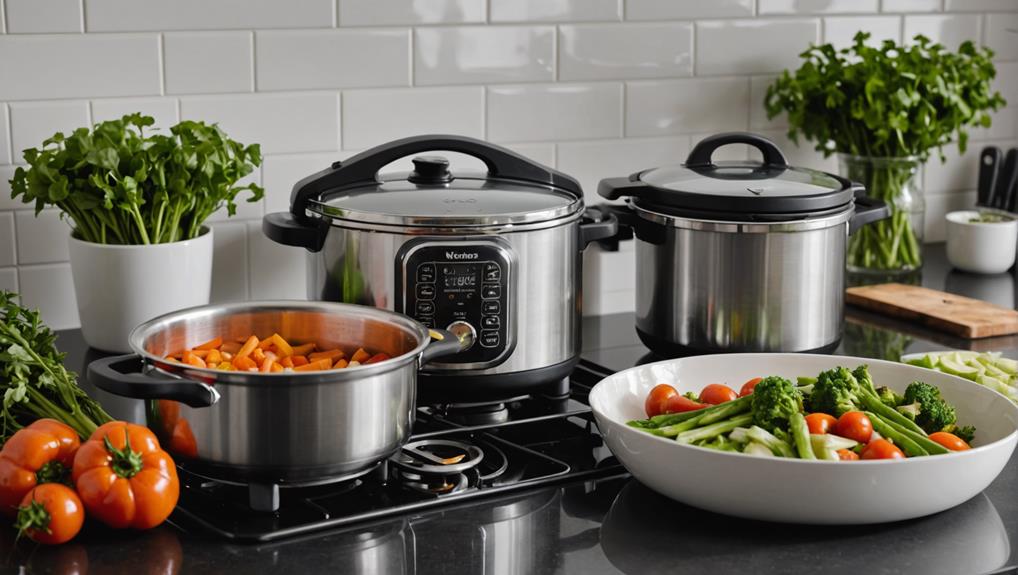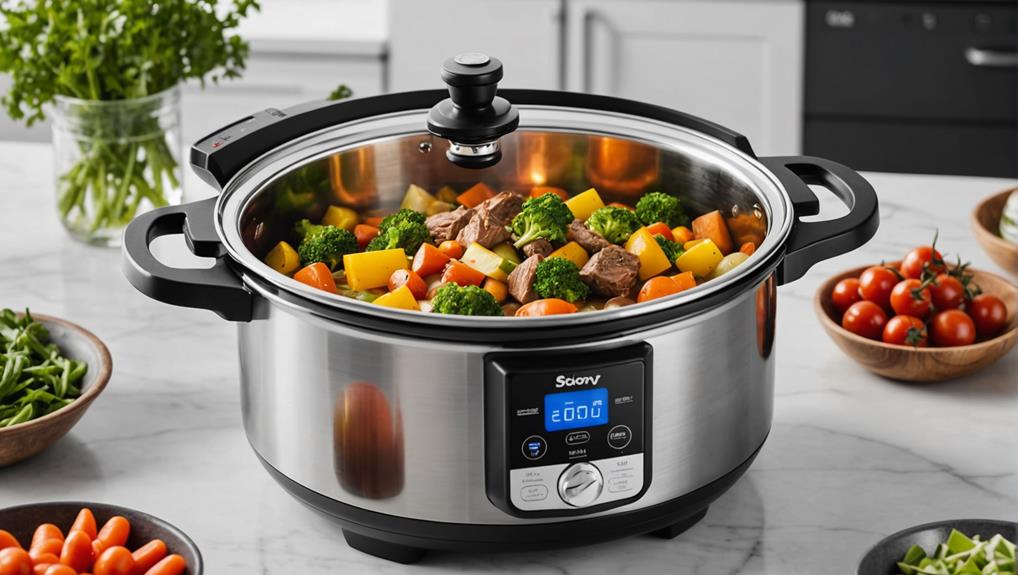Did you know that sweet potato casserole with pecan topping wasn't always the beloved holiday staple it is today? This dish's journey from a simple Southern side to a nationwide favorite is as rich as its flavor profile. You'll find that its evolution reflects changing culinary trends and regional influences, with each generation adding its own twist. As you explore this comforting casserole's history and preparation, you'll uncover the secrets behind its enduring popularity and learn how to create a version that'll have your guests asking for seconds. But first, let's dig into the roots of this quintessential holiday treat.
Key Takeaways
- Sweet potato casserole combines mashed sweet potatoes with a crunchy pecan topping for a classic holiday side dish.
- The dish features a creamy sweet potato base topped with a mixture of brown sugar, butter, and chopped pecans.
- Typically baked for 25-30 minutes at 375°F (190°C) until the pecan topping is golden brown and crispy.
- Can be prepared in advance and customized with additional spices like cinnamon or nutmeg for extra flavor.
- Pairs well with roast turkey or ham and serves as a versatile side dish for holiday gatherings and family dinners.
History
Tracing the origins of sweet potato casserole reveals a dish deeply rooted in American culinary tradition. You'll find its beginnings in the southern United States, where sweet potatoes have been a staple crop for centuries. The casserole's evolution mirrors the region's history, blending Native American, African, and European influences.
In the early 20th century, marshmallow-topped versions gained popularity, thanks to the marshmallow industry's marketing efforts. However, the pecan topping variation you're familiar with today emerged as a more sophisticated alternative, showcasing the South's abundant nut harvests.
During the Great Depression, sweet potato casserole became a cherished holiday dish, offering comfort and indulgence during challenging times. Its affordability and ability to feed large families contributed to its widespread adoption.
As families migrated across the country, they carried this tradition with them, solidifying the casserole's place in American holiday menus.
Today, you'll find countless variations of sweet potato casserole, but the pecan-topped version remains a favorite, balancing the sweet, creamy base with a crunchy, nutty topping that epitomizes Southern comfort food.
Recipe
Sweet potato casserole with pecan topping is a classic holiday dish that combines the natural sweetness of sweet potatoes with a crunchy, nutty topping. This simplified version uses only five ingredients, making it an easy and accessible recipe for any home cook.
While traditional recipes often include additional spices and flavorings, this streamlined version relies on the natural taste of sweet potatoes and the richness of butter to create a satisfying dish. The pecan topping adds texture and a delightful contrast to the creamy sweet potato base.
- 3 lbs (1.4 kg) sweet potatoes
- 1/2 cup (115 g) unsalted butter, divided
- 1/4 cup (60 ml) milk
- 1/2 cup (100 g) brown sugar
- 1 cup (120 g) chopped pecans
Preheat the oven to 375°F (190°C). Peel and cut the sweet potatoes into chunks, then boil until tender. Drain and mash the sweet potatoes with 1/4 cup of butter and the milk. Spread the mixture in a 9×13 inch baking dish.
In a separate bowl, mix the remaining butter (melted), brown sugar, and chopped pecans. Sprinkle this mixture over the sweet potatoes. Bake for 25-30 minutes or until the topping is golden brown and crispy.
For best results, choose sweet potatoes that are firm and free from blemishes. To save time, you can microwave the sweet potatoes instead of boiling them. If the topping starts to brown too quickly, cover the dish with foil.
Leftovers can be stored in the refrigerator for up to 3 days and reheated in the oven or microwave.
Cooking Steps
To prepare this sweet potato casserole, you'll start by peeling and chopping the sweet potatoes, then boiling them until tender.
Next, you'll mash the cooked sweet potatoes with butter and milk, creating a smooth base for your casserole.
Step 1. Peel and Chop Potatoes
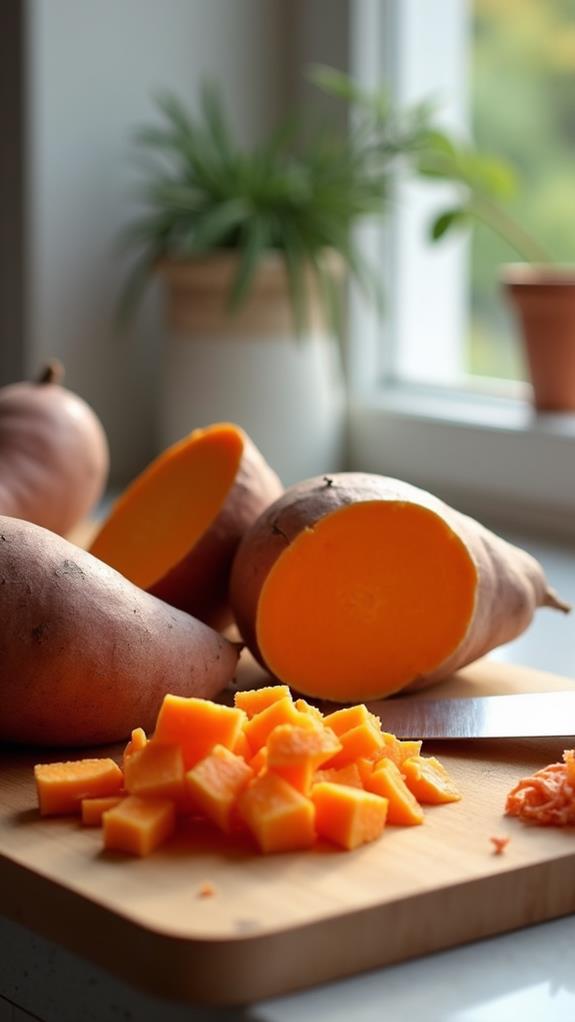
Before diving into the recipe, you'll need to prepare the sweet potatoes. Start by washing them thoroughly under cool running water, using a vegetable brush to remove any dirt or debris.
Once clean, grab a sturdy peeler and remove the skin from each potato, working from one end to the other. Don't worry if you miss a few small patches of skin; they won't affect the final dish.
Next, you'll want to chop the peeled sweet potatoes into roughly 1-inch cubes. Use a sharp knife and a stable cutting board to ensure safety and efficiency.
Try to keep the pieces relatively uniform in size, as this will help them cook evenly. If you come across any dark spots or blemishes while chopping, simply cut them out and discard them.
Once you've finished chopping, place the cubes in a large bowl of cold water to prevent browning. When you're ready to cook, drain the water and pat the sweet potato pieces dry with a clean kitchen towel or paper towels.
Step 2. Boil Sweet Potato Chunks
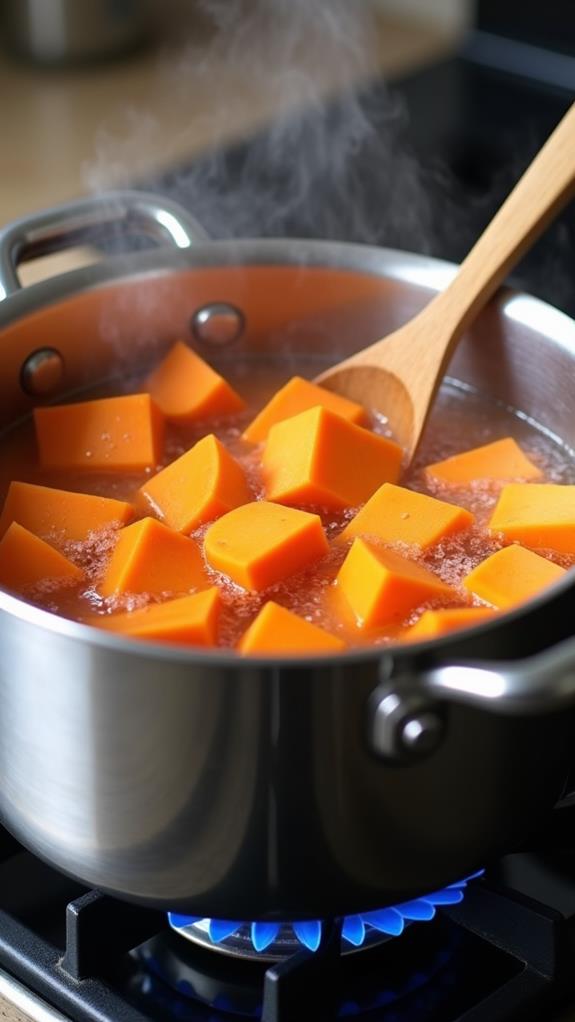
Once you've prepared your sweet potato chunks, it's time to cook them. Fill a large pot with enough water to cover the sweet potatoes completely, and bring it to a boil over high heat.
Once the water is boiling, carefully add your sweet potato chunks to the pot. You'll want to reduce the heat slightly to maintain a steady simmer, ensuring the potatoes cook evenly without falling apart.
As the sweet potatoes cook, you'll notice them becoming softer. To test for doneness, insert a fork into one of the larger chunks. If it slides in easily, your sweet potatoes are ready. This process typically takes about 15-20 minutes, depending on the size of your chunks.
Be careful not to overcook them, as they'll become waterlogged and lose their natural sweetness. Once they're tender, remove the pot from the heat and drain the sweet potatoes in a colander.
Let them steam dry for a few minutes before proceeding with the next steps in your recipe. This boiling method ensures your sweet potatoes are perfectly cooked and ready for mashing.
Step 3. Mash Potatoes With Butter
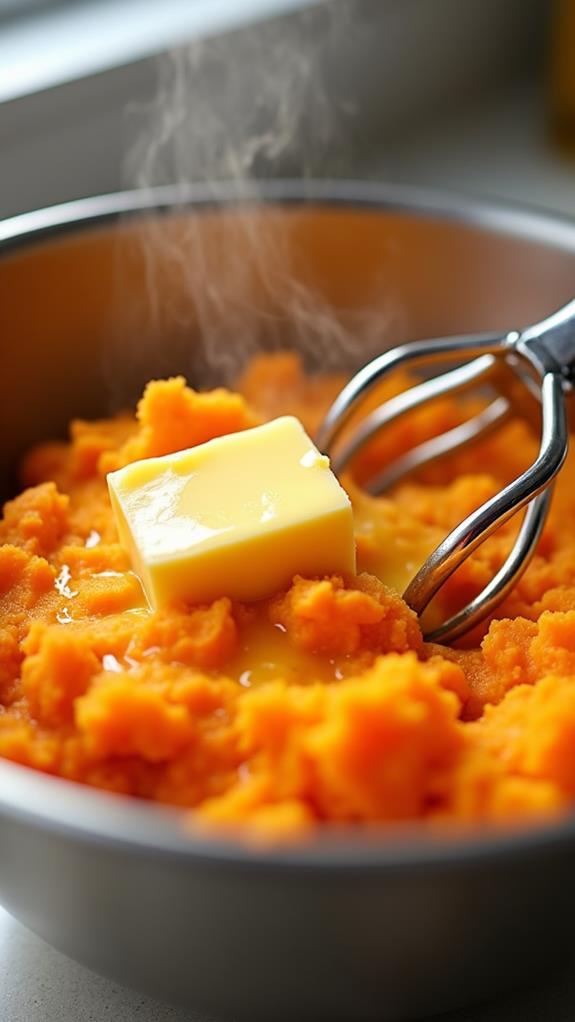
Now that your sweet potato chunks are perfectly cooked and drained, it's time to transform them into a creamy, buttery mash.
Begin by transferring the hot sweet potatoes to a large mixing bowl. Add 1/4 cup of unsalted butter, allowing it to melt from the residual heat of the potatoes. Pour in 1/4 cup of milk, which will help achieve the desired consistency.
Using a potato masher or an electric mixer, start mashing the sweet potatoes. As you work, you'll notice the butter and milk incorporating, creating a smooth and velvety texture.
Continue mashing until you've reached your preferred consistency, whether that's completely smooth or with a few small lumps for added texture. If the mixture seems too thick, you can add a little more milk, one tablespoon at a time. Remember, it's easier to thin out the mash than to thicken it, so add liquid gradually.
Once you're satisfied with the consistency, give the mashed sweet potatoes a taste. If needed, you can adjust the seasoning with a pinch of salt or a dash of cinnamon for extra warmth and flavor.
Step 4. Mix Topping Ingredients
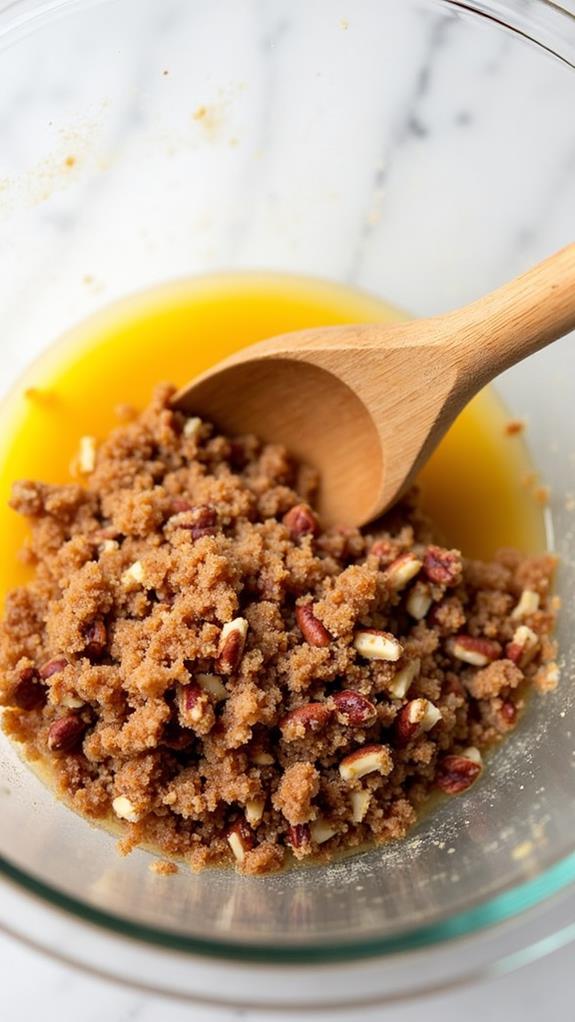
Creating the perfect topping for your sweet potato casserole is a simple yet crucial step. To begin, you'll need to gather your ingredients: melted butter, brown sugar, and chopped pecans.
In a medium-sized bowl, combine 1/4 cup of melted butter with 1/2 cup of brown sugar. Using a fork or whisk, mix these ingredients thoroughly until they form a smooth, cohesive blend. The sugar should fully dissolve into the butter, creating a rich, caramel-like mixture.
Next, add 1 cup of chopped pecans to the bowl. Gently fold the pecans into the butter and sugar mixture, ensuring that each piece is evenly coated. This coating will help the pecans crisp up nicely in the oven and create a delightful contrast to the creamy sweet potato base.
Be careful not to overmix, as you want to maintain the texture of the chopped nuts. Once everything is well combined, your topping is ready to be sprinkled over the mashed sweet potatoes.
This simple yet delicious topping will transform your casserole into a show-stopping holiday dish.
Step 5. Bake Until Topping Browns
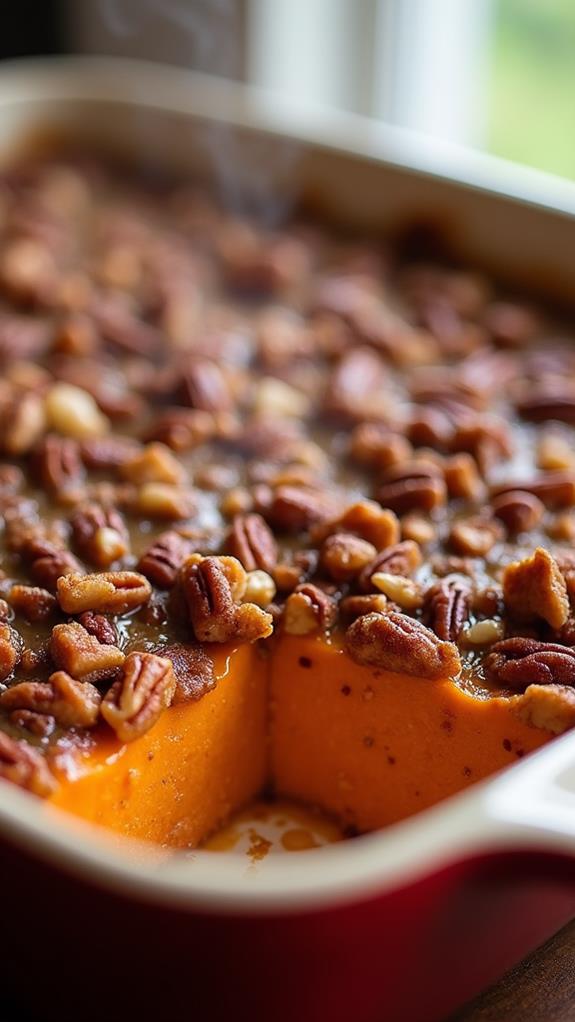
With your topping prepared, it's time to focus on baking your sweet potato casserole to perfection. Place the casserole dish in your preheated 375°F (190°C) oven, positioning it on the middle rack for even heating.
As the casserole bakes, you'll notice the enticing aroma of caramelizing sugar and toasting pecans filling your kitchen.
Keep a close eye on the dish as it bakes, checking it after about 20 minutes. You're looking for the topping to turn a rich, golden brown color and develop a crispy texture. This process usually takes 25-30 minutes, but oven temperatures can vary.
If you see the topping browning too quickly, don't hesitate to cover the dish loosely with aluminum foil to prevent burning.
The casserole is ready when the pecan topping is golden and crisp, and the sweet potato mixture is heated through. To test, insert a knife into the center; it should come out hot.
Once done, carefully remove the casserole from the oven using oven mitts. Let it cool for a few minutes before serving to allow the flavors to meld and the dish to set slightly.
Final Thoughts
This simplified sweet potato casserole recipe offers a delicious and hassle-free way to enjoy a classic holiday dish.
You'll appreciate how the natural sweetness of the potatoes shines through, complemented by the rich, buttery flavor and crunchy pecan topping. It's a versatile side that pairs well with various main courses, from roast turkey to ham.
Don't hesitate to make this dish your own. If you prefer a sweeter casserole, add a touch more brown sugar to the topping.
For a hint of spice, consider incorporating a dash of cinnamon or nutmeg into the mashed sweet potatoes. You can even prepare the casserole a day in advance, storing it in the refrigerator and baking it just before serving.
This time-saving strategy is especially useful during busy holiday meal preparations.
[DIRECTIONS]:

